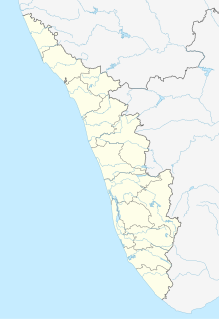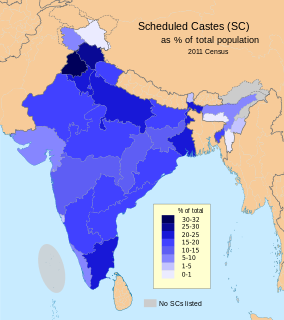
Pattom Thanu Pillai was a participant in the Indian independence movement who later served as the Chief Minister of Kerala from 22 February 1960 to 25 September 1962. He was known as the 'Bhishmacharya' of Kerala politics.

The Kerala Legislative Assembly, popularly known as the Niyamasabha, is the State Assembly of Kerala, one of the 29 States in India. The Assembly is formed by 140 elected representatives and one nominated member from the Anglo-Indian community. Each elected member represents one of the 140 constituencies within the borders of Kerala and is referred to as Member of the Legislative Assembly (MLA).

The Vimochana Samaram (1958–59) was an anti-Communist backlash against the first elected state-government in Kerala, India, which was led by E. M. S. Namboodiripad of the Communist Party of India. Organised opposition to the state government was spearheaded by the Catholic Church in Kerala, the Nair Service Society and the Indian Union Muslim League, and backed by elements of India's ruling Indian National Congress Party; although termed a "liberation struggle", the campaign was largely peaceful, taking the form of statewide meetings and public demonstrations. In June 1959, Kerala was rocked by mass protests calling for the resignation of the communist ministry. The Indian government finally bowed to pressure and dismissed Namboodiripad on July 31, 1959.
R. Sankara Narayana Thampi was a freedom fighter, Indian National Congress then became a member of Communist Party of India activist and served as the First Speaker of the Kerala Legislative Assembly from April, 1957 to July, 1959.

The first legislative assembly Election to the Madras state on the basis of universal adult suffrage was held in March 1952. This was the first election held in Madras state after the Indian Independence. This election was officially known as 1951 Madras State Election, even though through delays, actual voting didn't take place until early 1952.

The second legislative assembly election to the Madras state was held on 31 March 1957. This was the first election held after the linguistic reorganisation of Madras state in 1954. Indian National Congress and its leader K. Kamaraj won the election, and defeated its rival Dravida Munnetra Kazhagam. In 1954, due to the resignation of C. Rajagopalachari, for his controversial Kula Kalvi Thittam, the leadership of Congress was contested, between K. Kamaraj, and C. Subramaniam. Eventually, K. Kamaraj, won the support of the party, was elected leader and chief minister of Madras State in 1954. In a surprise move, he appointed both M. Bhaktavatsalam and C. Subramaniam, in his cabinet, allowing great unity amongst Congress, that ruled the state of Madras, for the next decade. This election saw future DMK leaders, M. Karunanidhi and K. Anbazhagan winning their first MLA seat in the legislative assembly.

The Council of Ministers (1957–59) of Legislative Assembly, Kerala state was the first Council of Ministers, the executive wing of state government, in the Indian state of Kerala. The ministry was led by Communist Party of India leader E. M. S. Namboodiripad from 5 April 1957 to 31 July 1959 and had eleven ministries.
The Travancore Tamil Nadu Congress (TTNC) was a political party in the Indian state of Travancore-Cochin. The party was led by A. Nesamony.
Elections to the Legislative Assembly of the Indian state of Travancore-Cochin were held on 15 February 1954. 265 candidates competed for the 106 constituencies in the Assembly. There were 11 two-member constituencies and 95 single-member constituencies. Out of these, 1 single member and 1 two-member constituency was reserved for SC.

Elections to the Legislative Assembly of the Indian state of Travancore-Cochin were held on 27 March 1952.

The Kerala Legislative Assembly election of 1960 was the second assembly election in the Indian state of Kerala. The elections were held on 1 February 1960.

Chathannoor Assembly Constituency or Chathannur Assembly Constituency is a legislative assembly constituency in Kollam district of Kerala, India.

Padmanabhan Ravindran or P. Ravindran was an Indian politician who was the Minister for Industries, Labour and Forests in Kerala from 1 November 1969 to 3 August 1970. He was the secretary of the CPI Legislature Party from 1967 to 69. Ravindran was imprisoned many times for political reasons. He also chaired as the Chairman and Managing Director of Janayugom Newspaper, Prabhatham Printers and Publishing Company. He has played a major role in building the party cadre in the state of Kerala and received the Sadanandan Award for the Best Co-operator.

Kottarakara or Kottarakkara is a legislative assembly constituency in Kollam district of Kerala, India. It is one among the 11 assembly constituencies in Kollam district.

Chavara is a legislative assembly constituency in Kollam district of Kerala, India. It is one among the 11 assembly constituencies in Kollam district.

Eravipuram is a legislative assembly constituency in the southern coastal area of Kollam district in Kerala, India. It is one among the 11 assembly constituencies in the district.






















